Cherry variety Shokoladnitsa
Shokoladnitsa - a variety of ordinary cherry with fruits of medium ripening. Bred at the All-Russian Research Institute of Breeding of Fruit Crops through crossing the variety Lyubskaya with the late mutant Black Consumer Goods. The authorship is assigned to A.F. Kolesnikova, M.V. Mikheeva and T.A. Trofimova.
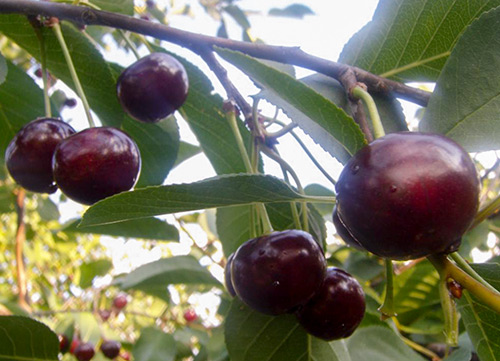
Since 1996, the variety has been zoned in the Central Region.
The trees of this cherry are low (no more than 2 - 2.5 m), the crown is medium thickened, compact, raised, in shape - reverse pyramidal. The annual growth of seedlings reaches a height of 70 cm. The shoots are medium-sized, straight, brown in color with a gray bloom. The bark of the trunk and main branches are brown. Buds 0.3 - 0.4 cm long, cone-shaped, closely pressed to the shoots. The leaves are dark green above and light green below, obovate, with sharp bases and blunt tops. Leaf edges with double-serrated serration. A flat blade with a matte surface. The glands are located on the bases of the leaves and petioles (2 - 4 pcs.). Petiole dimensions: length - 16 mm, thickness - 18 mm. The tops of the petioles are anthocyanin.

Inflorescences are 3-flowered. Flowers are white. The petals are white, located freely. The rim is open, reaching 17.6 mm in diameter. Pistils up to 5.2 mm long, stamens up to 5.6 mm long. The stigma of the pistil is located below the level of the anthers. The calyx is bell-shaped, the sepals are strongly serrated. The flowering period is average, it falls in the 2nd decade of May (from the 15th to the 18th). The variety is characterized by a mixed type of fruiting.
The fruits of the Shokoladnitsa cherry are large (weight - 3.5 grams, height and thickness - 16.9 mm, width - 18.9 mm). The berries are broadly round in shape. The funnel of cherries is medium in size, the top is slightly depressed. The color of the fruit is maroon, almost black. The pulp is of medium density, very juicy, dark red in color, the taste is sweet and sour, with a slight bitterness, reminiscent of a sweet cherry. The juice from the pulp of the cherries is also dark red. Tasting score of fresh fruit taste is 3.8 - 4.0 points. The seeds are small, yellow, rounded, weighing 0.28 grams (8 - 10% of the weight of the fruit). The length of the stalk is 36.2 mm. The separation of the bone from the pulp is good.
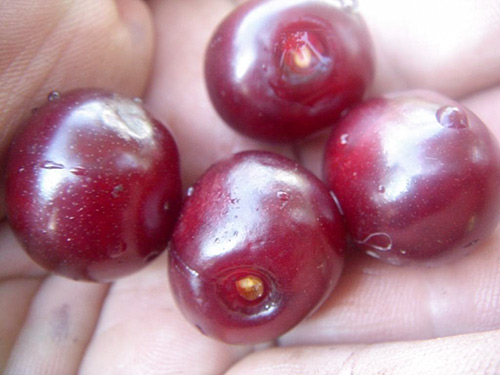
By chemical composition, the fruits contain: dry soluble substances (18.4%), the amount of sugars (12.4%), acids (1.64%). The variety is universal in use: in cooking it is used fresh, frozen and dried (compotes, liqueurs, jams, marshmallows, preserves, various drinks).
The ripening period for Shokoladnitsa is medium (from 8th to 15th July). The variety is early-growing: trees bear fruit from the 4th year. The yield is good: on average 11 - 12 kg per tree, or 77.9 c / ha, maximum - up to 96.6 c / ha. The variety is quite winter-hardy and drought-resistant. Concerning diseases: affected by coccomycosis and moniliosis.
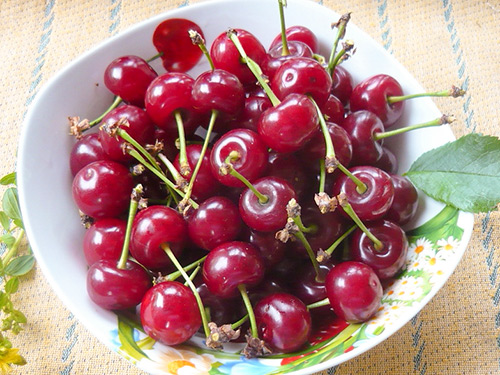
This cherry can be used to create a "hedge" (it is important to keep the distance between the bushes from 2.5 to 3 m when planting).
For planting seedlings, sunny places, sheltered from the wind, are preferable. In conditions of shade, partial shade and with strong waterlogging of the soil, one should not expect large yields from trees. The most suitable soil type is light sandy loam, with close to neutral or weak pH acidity. The groundwater level should not exceed 1.5 m.
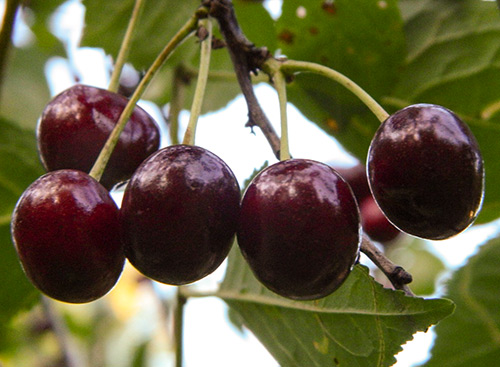
Among the main advantages of the Shokoladnitsa cherries are: large juicy berries that taste like sweet cherries; self-fertility; good indicators of productivity and winter hardiness.
The significant disadvantages of the variety include its susceptibility to fungal diseases.
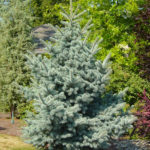
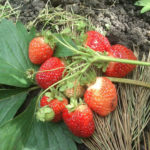
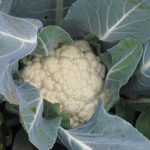


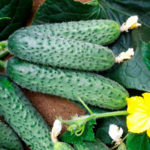



For our arid steppe sands Shokoladnitsa is the ideal variety. Although when I bought it was presented as an early cherry, in fact, it turned out not to ripen very early. But the wonderful taste of the berries completely compensates for the slight delay. And when buying, they warned that this new variety, after 15 years of fruiting, needs to be replaced. My Shokoladnitsa is 8 years old, so far it blooms more abundantly compared to another cherry and two cherries. And her berries are very large, fresh and tasty and sweet. Of course, it is necessary to treat the fungus from the appearance of the leaves and do not forget about it after harvesting. And don't be too zealous with pruning young branches, otherwise next year you can be left without cherries.